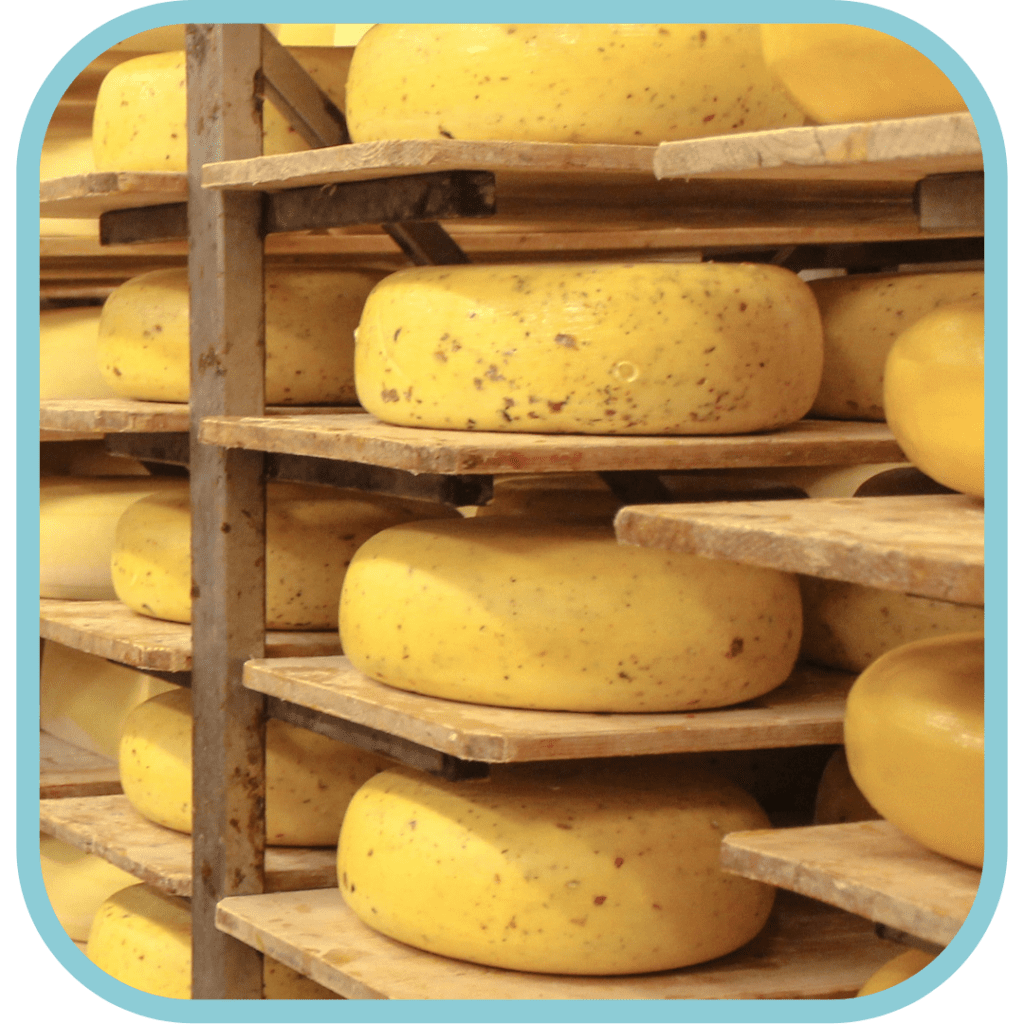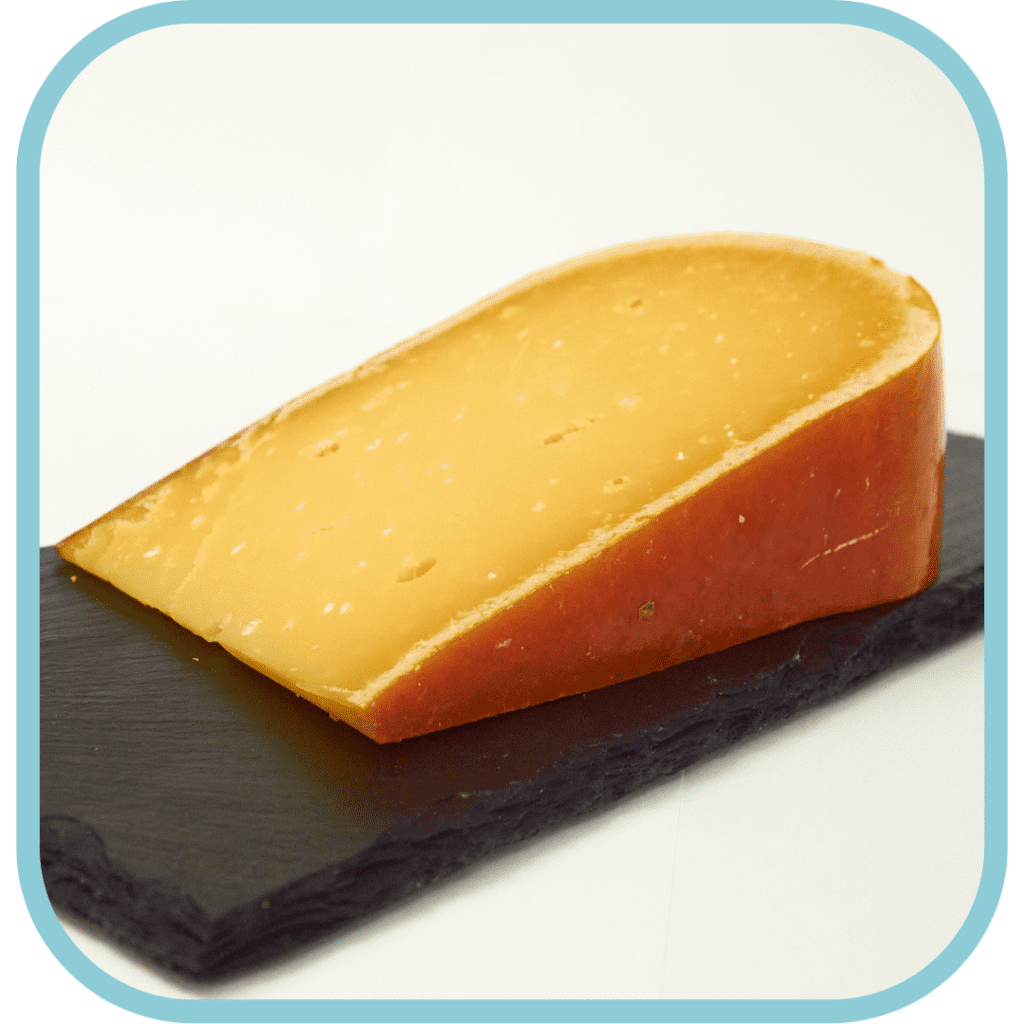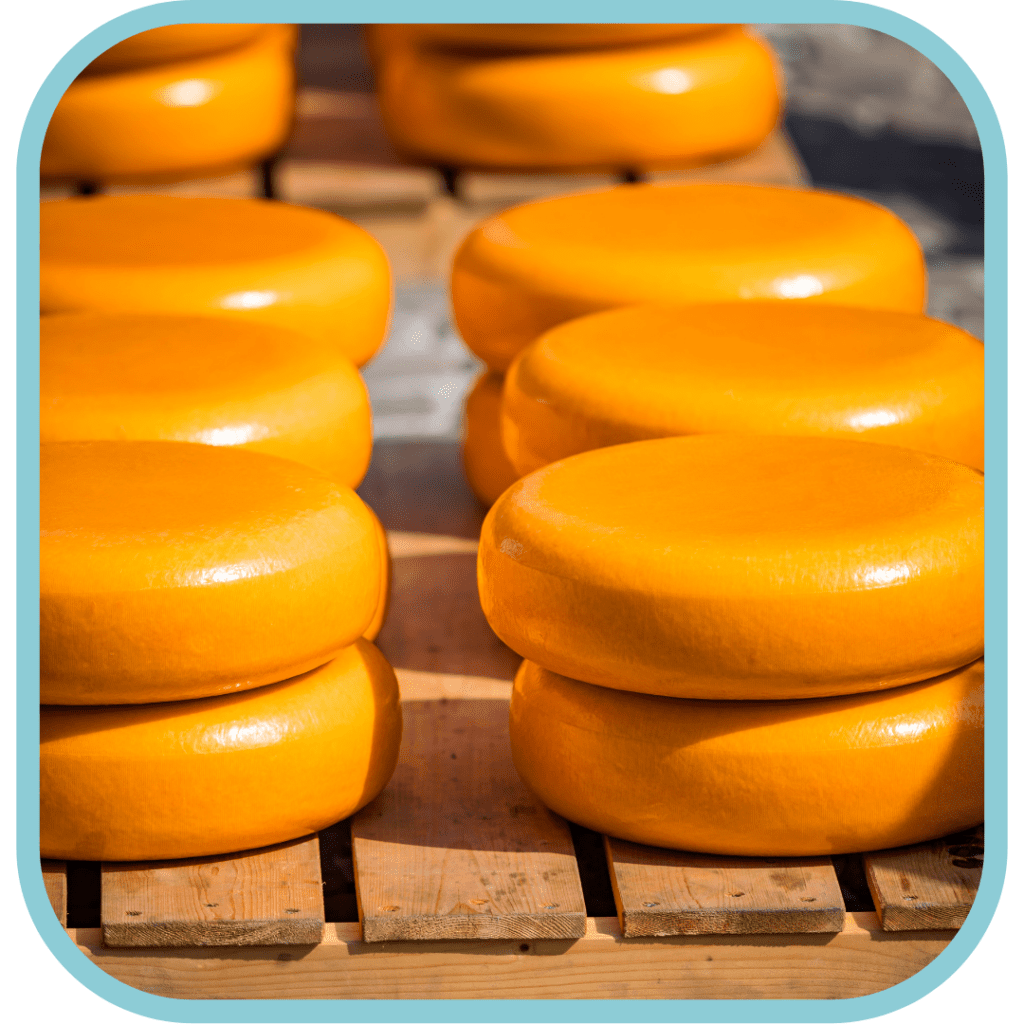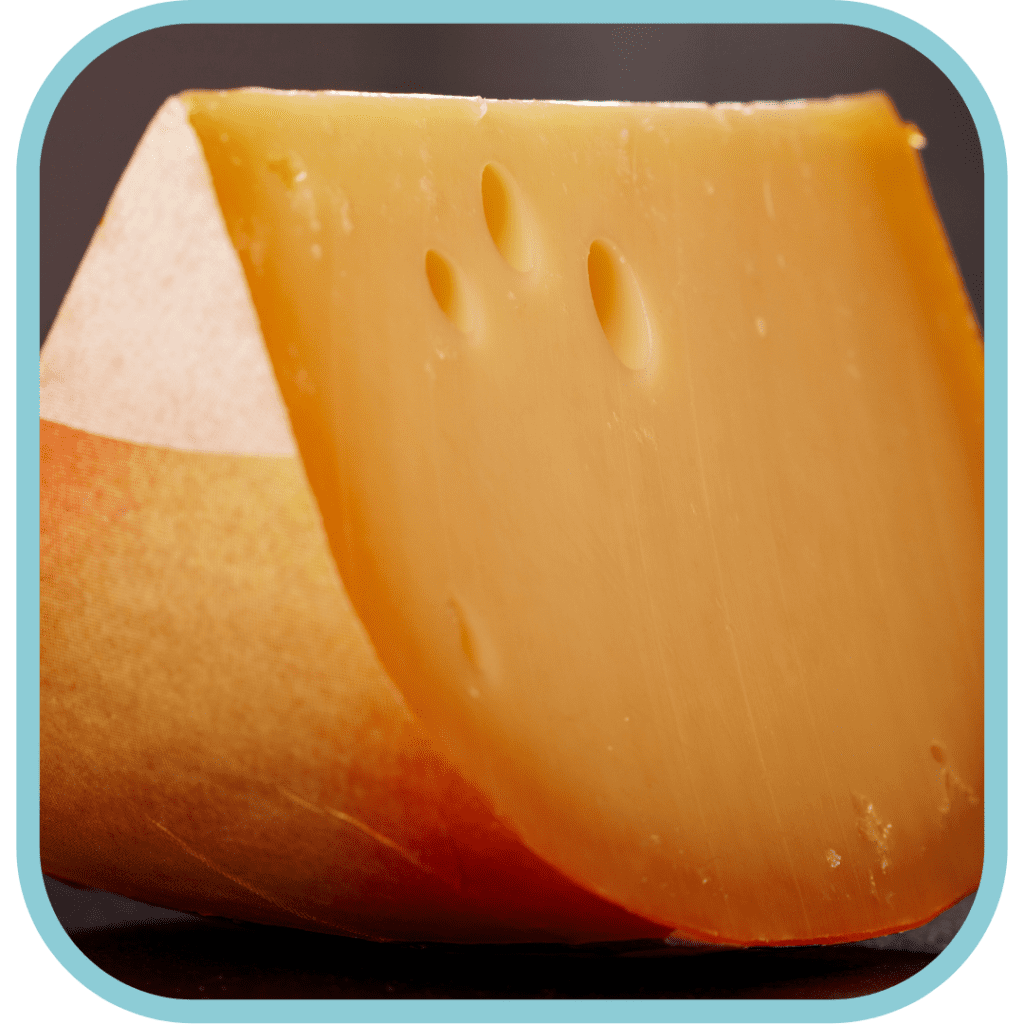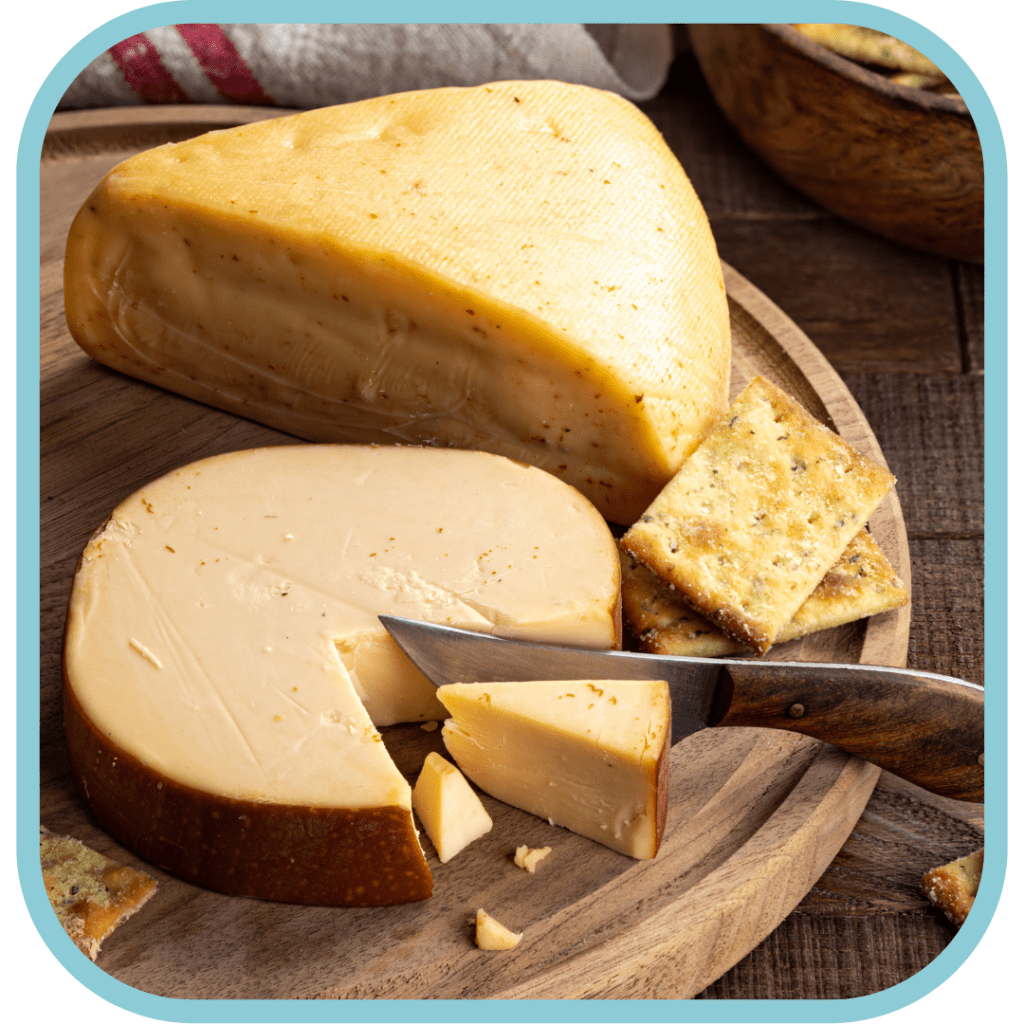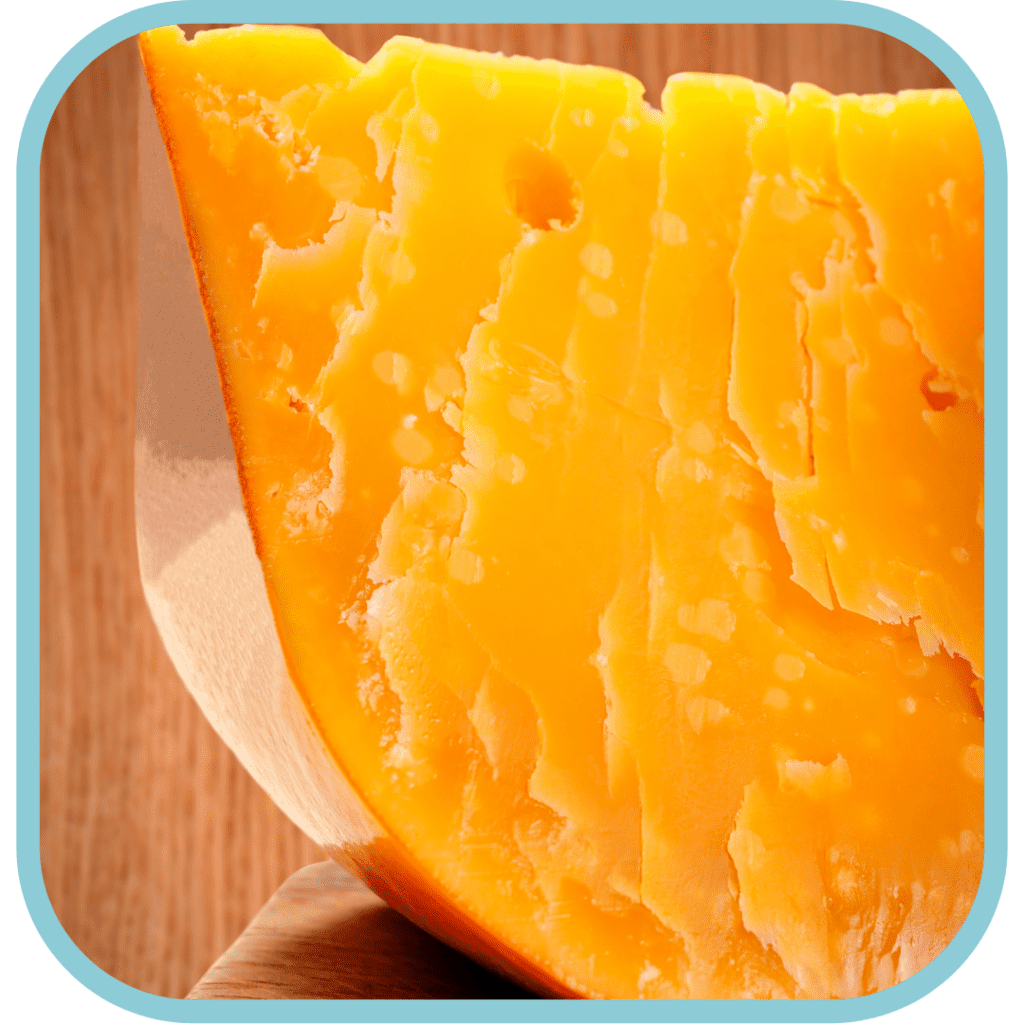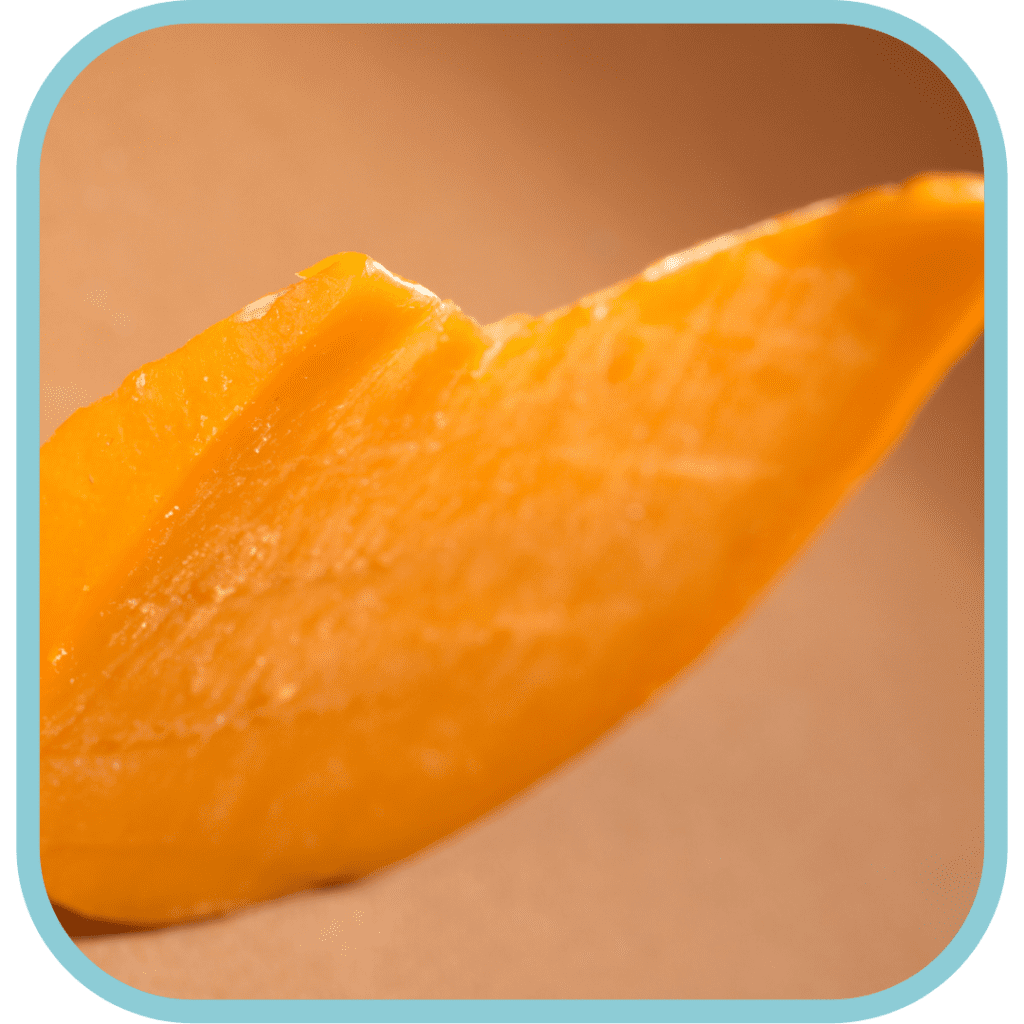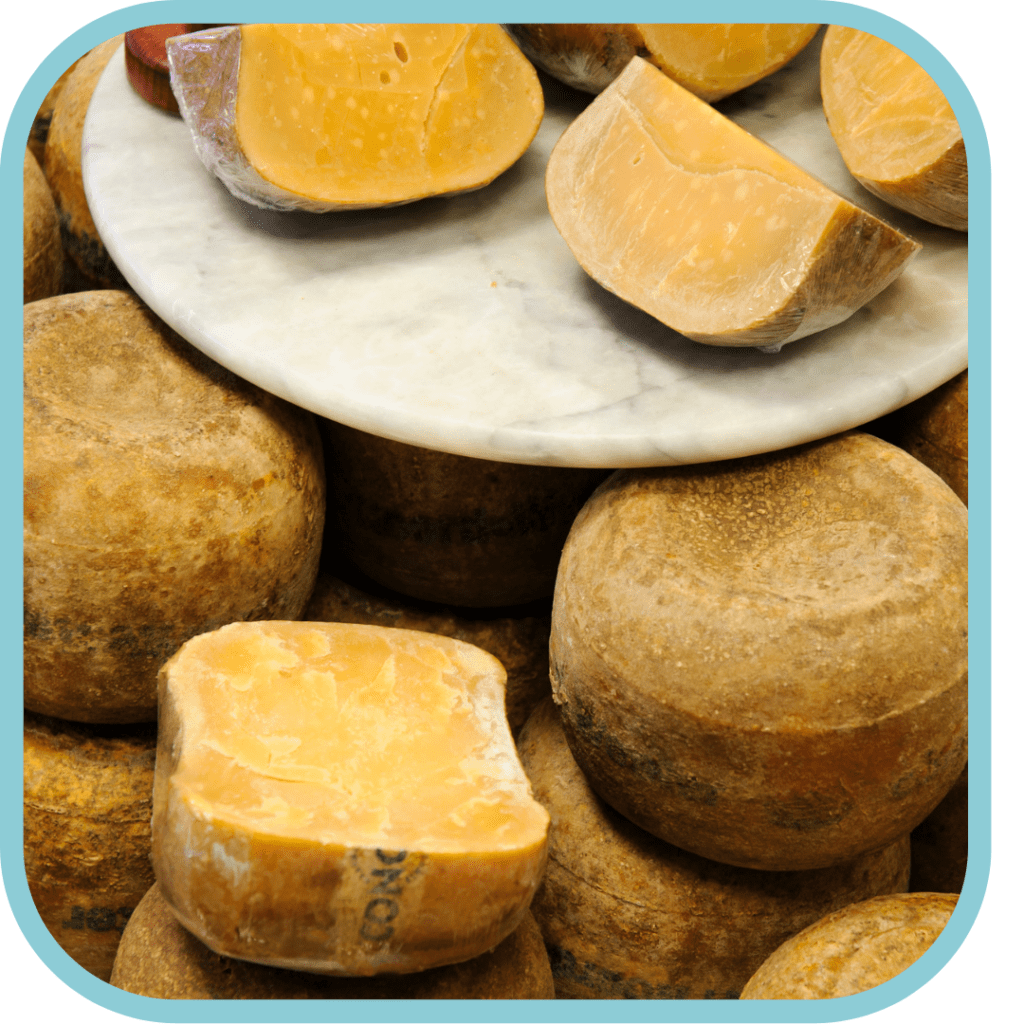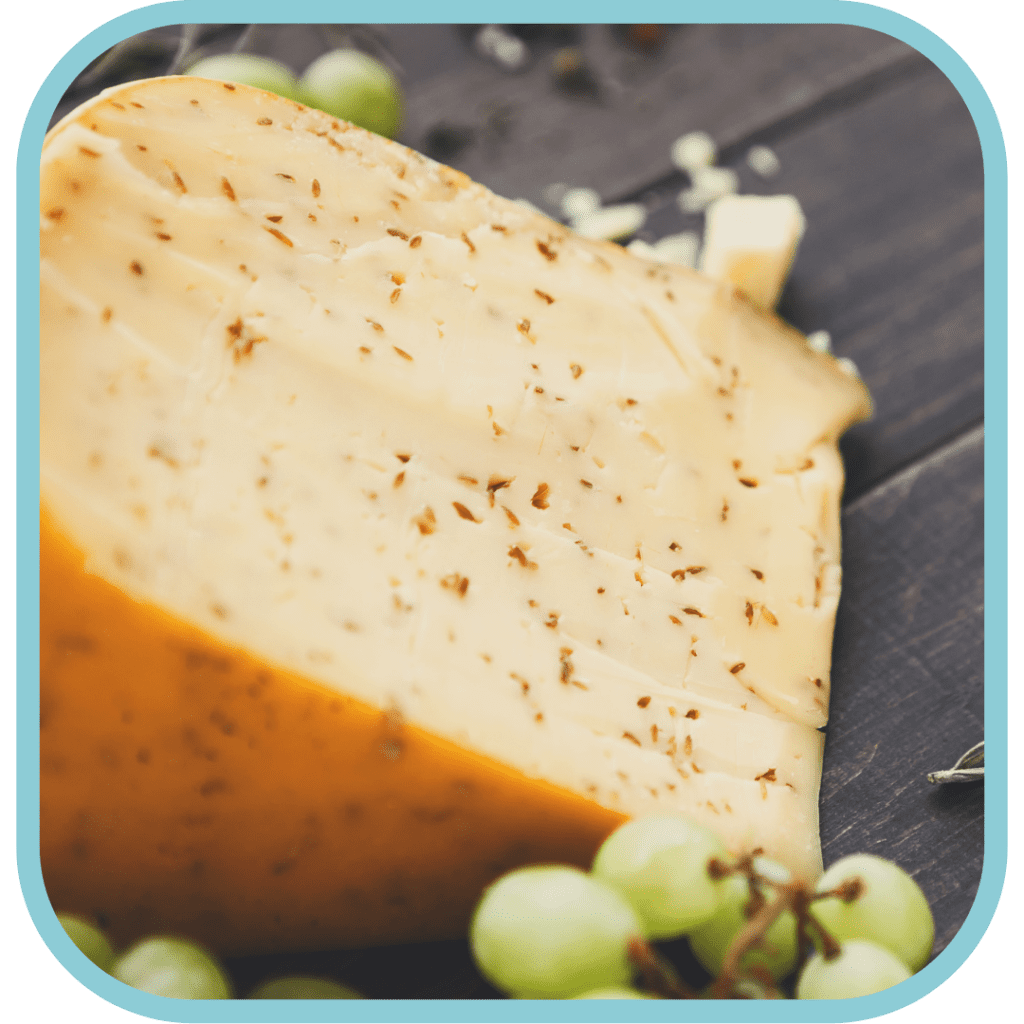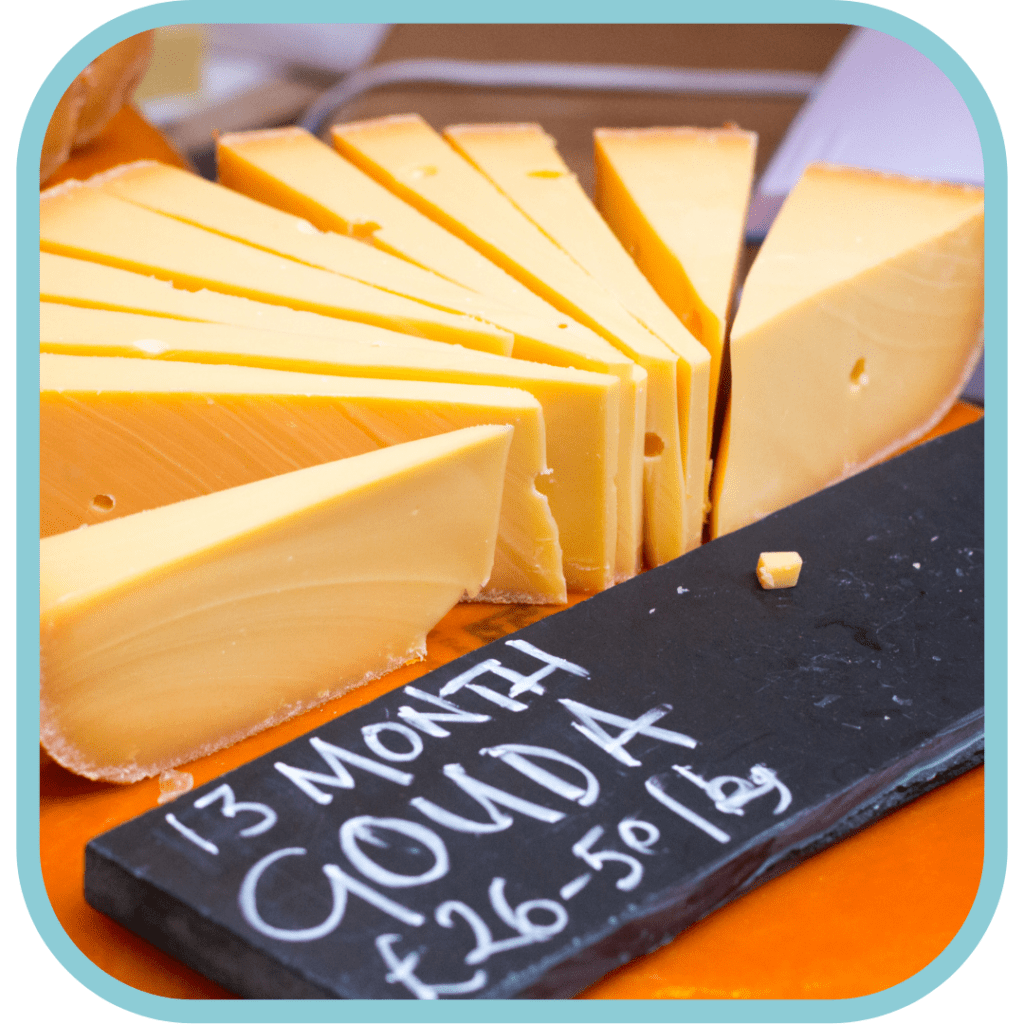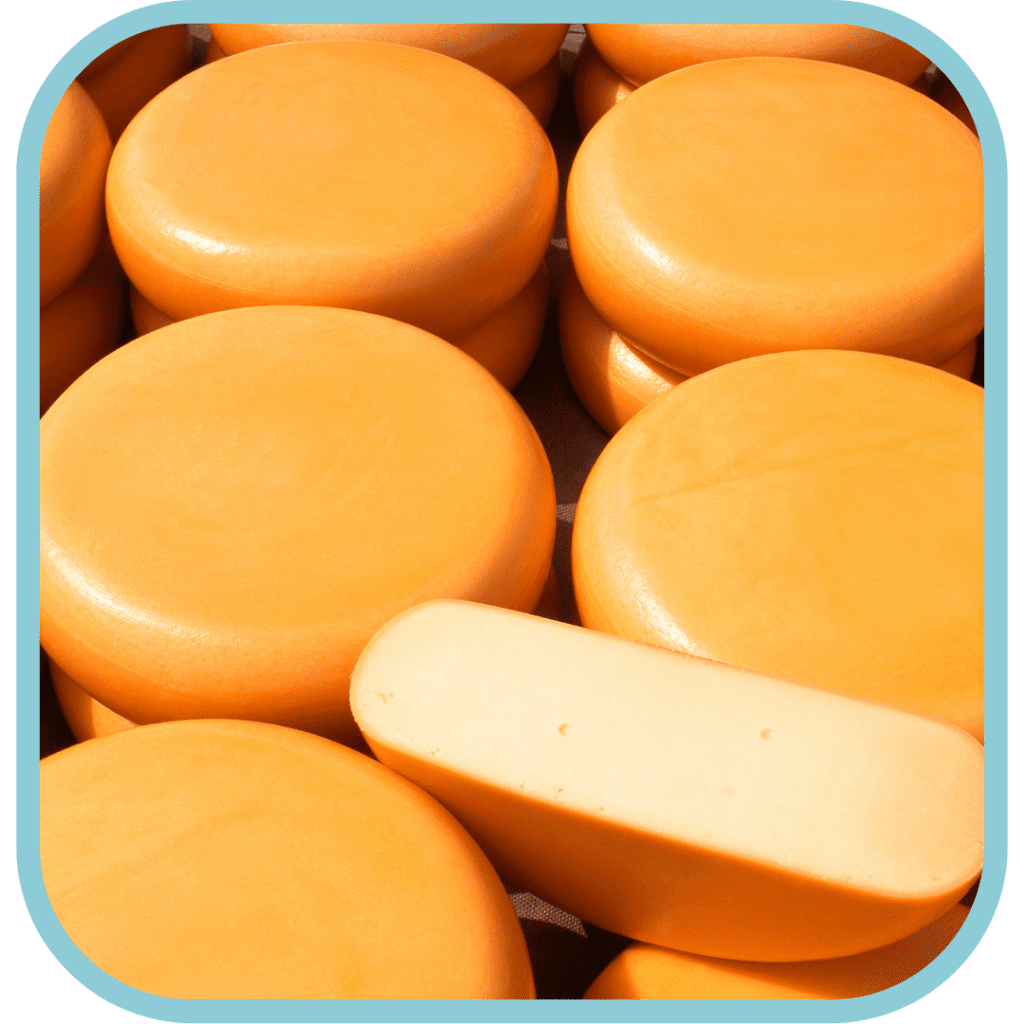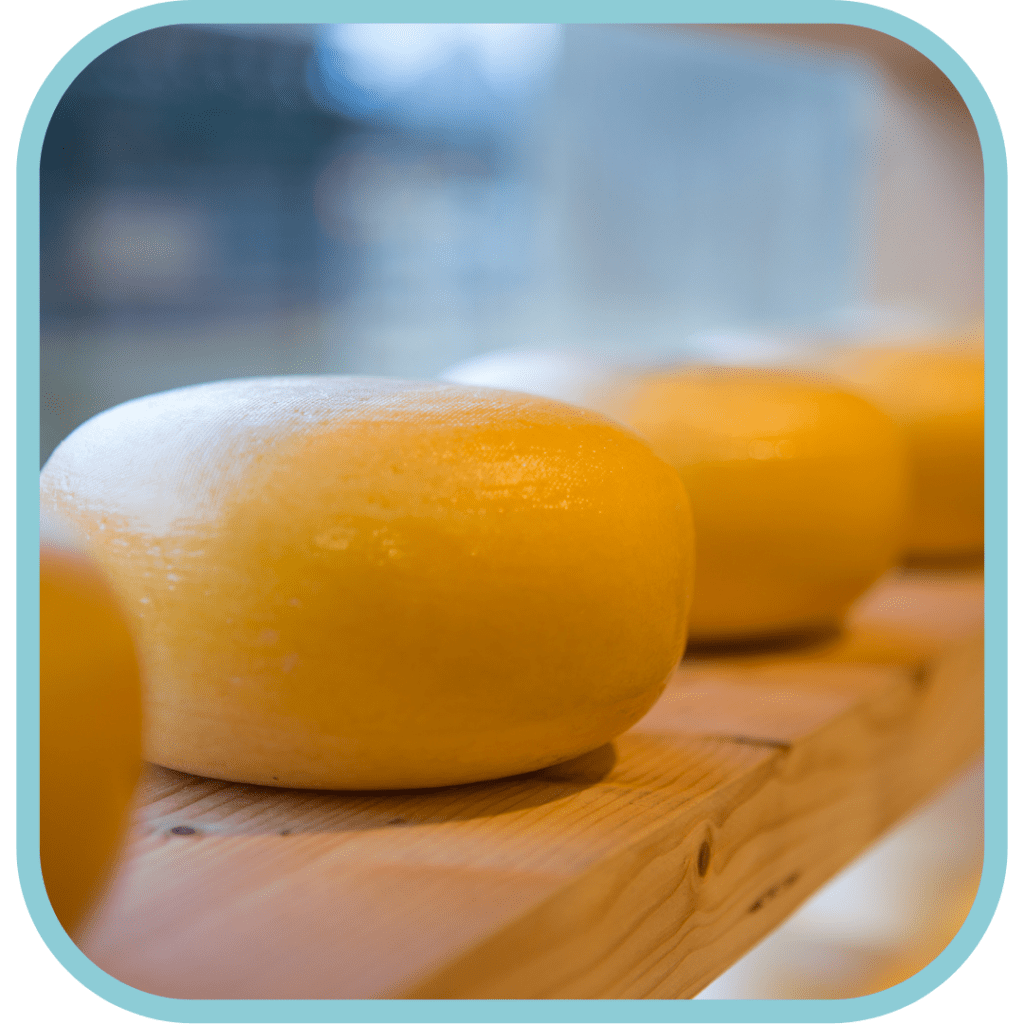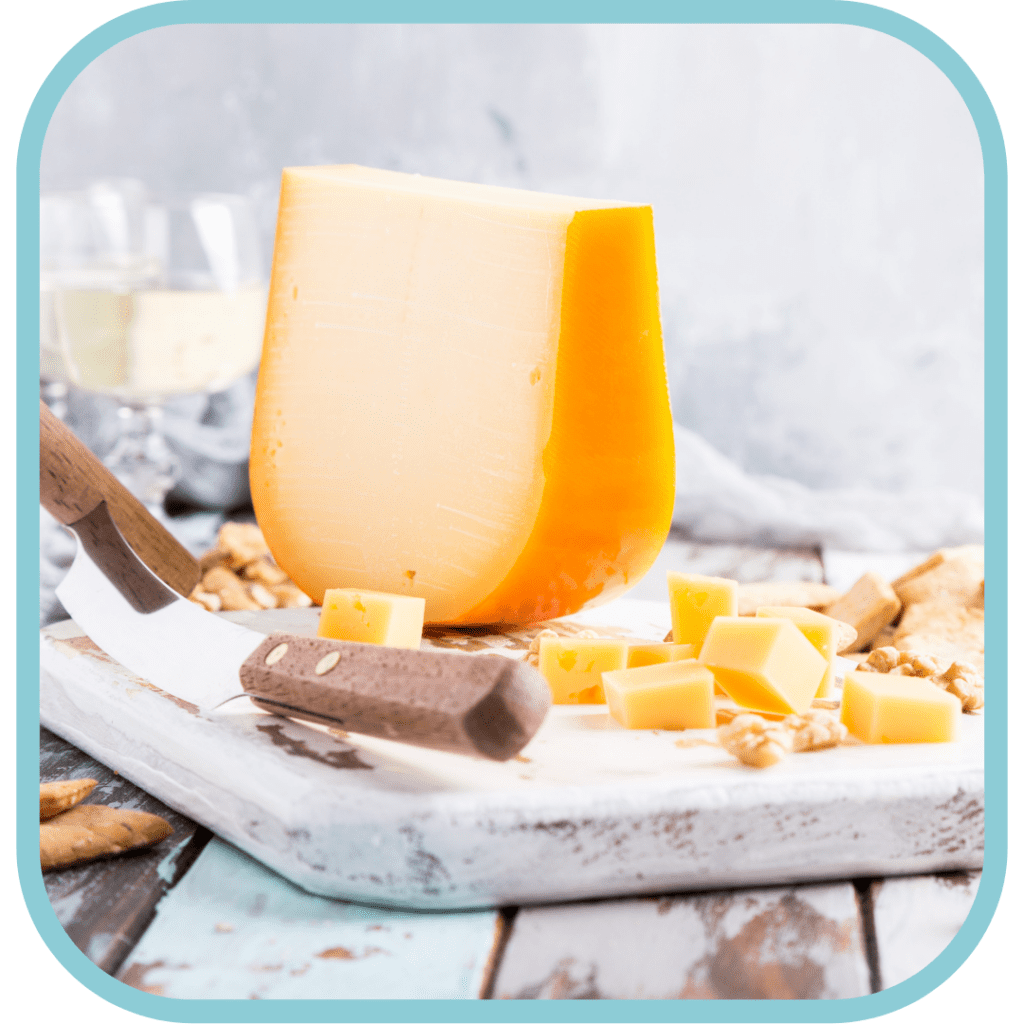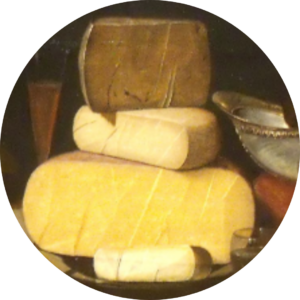What is Aged Gouda
Gouda originates in Holland, dating back at last as far as 1284. It was named for a famous cheese market in the town in Gouda in South Holland, although the production of Gouda was widespread. Gouda is now made all around the world, and the name Gouda on its own is not protected by any trade mark or protected food name legislation.
Gouda varies significantly as it ages. Younger cheeses, less than seven months, are soft and pliable with little or no complexity. Older cheeses (Aged Goudas) more than 12 or 14 months are very hard and may have high very levels of complex flavours.
This profile is for aged gouda, older then 16 months or so.
| Taste Profile | Tastes | Dairy Flavours | Other Flavours |
| Taste & Flavour | Moderate to high (dominant) sweet Moderate to high umami Moderate salt Low acid Low bitter | Butter Cooked Milk [Caramel, Toffee] | Malt, tobacco, sherry, white wine, chocolate, smoke |
| Mouthfeel | Very hard and initially dry. Chewing is required to break the curd and release the taste and flavour. |
| Description | Size and Shape: [Typically] 5-7kg, disc shaped 10-14cm tall and 30-50cm in diameter. The skin is not edible. Rind: the rind is an inedible wax or plastic coat. The cheese beneath the coating will be harder than the main body of the cheese and is edible. Paste: the paste will be pale orange to strongly orange in colour, and even across the cheese. Usually the paste is smooth with no cracks or fissures. A small number of holes or eyes are to be expected, up to the size of a marble. They should not be numerous. Some cheese can also develop salt-like (but not salt) crystals. |
Gouda is the worlds most produced cheese. There are several features that make Gouda easier to recognise:
- Shape: the cheese has a flat top and bottom but with pronounced curved edges.
- Caramel: The washed curd method sweetens the curd and develops caramel notes when aged
- Skin or rind: a characteristically thick skin of plastic or wax added before during its maturation. The skin is usually imprinted with branding or other information
- Colour: most counters are coloured with annatto which makes them pale to strongly orange
Key cheesemaking techniques for Gouda:
- the European tradition of Recombining the curds prior to draining in the VAT ; and
- a technique called Washed Curd: while curds and still in the whey an amount of whey is removed and replaced with fresh water. This reduces acidity of the curd which allows for more sweet flavours to develop during aging.
Variations
Gouda split from Edam and France’s Mimolette in the 17th Century.
There are three Gouda Protected Food Names:
- Boerenkaas PDO
- Noord-Hollandse Gouda PDO
- Gouda Holland PGI.
Today variations of Gouda are numerous, with many cheesemakers finding their own interpretation in their locality. The sweet and caramel notes with age and curved edge shape remain common themes.

